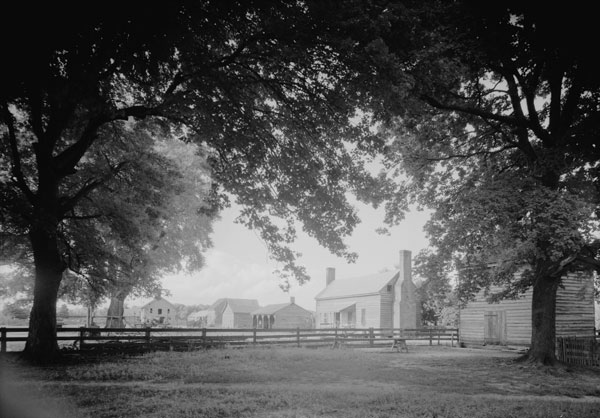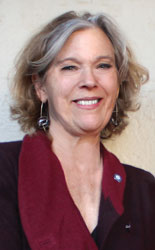Our sense of well-being often is linked to places that have deep personal meaning and history

A view of the work yard featuring one of the original slave dwellings
at Bacon’s Castle in Surry County. Courtesy Library of Congress.
by Elizabeth S. Kostelny ’81
“Sense of place gives equilibrium; extended,
it is sense of direction, too.”
— EUDORA WELTY
Close your eyes and imagine a place that you treasure. Are you on a mountainside trail or on a busy downtown street? Maybe a quiet corner of Longwood University’s campus or the winding road to Goshen’s Pass? How do you feel? Has your fondness for the place changed with time? Why does this particular place matter to you?
Virginia is rich with historic, cultural, scenic and natural sites. These places distinguish the commonwealth from other states in the nation to give us a shared identity as Virginians. Studies show people are drawn to place, particularly old places. We gain confidence from them. Our understanding of where we have been individually and collectively is deepened. We connect to something bigger than ourselves. We visit these places, and we make them our homes.
For more than 25 years, I have advocated for the preservation of these places. I am not alone. A whole profession has grown out of the desire to save and reuse historic buildings to serve the needs of today’s communities and a growing economy. (In spite of rumors to the contrary, historic preservation and economic growth are not mutually exclusive, but that is a topic for another time.)
I am fortunate. My job provides many glimpses into the power of place. I am afforded the opportunity to see how historic places play a role in reconciling and transforming communities. Here are just a few examples.
For several years, Bacon’s Castle (1665) in Surry has hosted Joseph McGill’s slave dwelling project. Last spring, McGill and a group of Wisconsin high school students slept in the Surry property’s slave quarters. As the group prepared dinner, the discussion jumped from the lives of the enslaved people in the 19th century to the Civil War to current events. The conversation turned to traffic stops. The African-American students shared stories about how their parents prepared them for interactions with police; the white students confessed the topic had never come up. The young men listened intently to each other. Bacon’s Castle served as a safe place for the dialogue, and the experience helped the students reconcile how the legacies of the past still impact their lives.
In Roanoke, developers and city officials gathered to talk about the transformation of the downtown, focusing on the recent rehabilitation. Ten years ago, barely 20 people lived downtown. People considered it a ghost town. Today a vibrant community of 1,500 people live, work and play in buildings rehabilitated for office, residential and retail space. While historic tax credits made much of the development possible, everyone in the meeting agreed the spark for the “population explosion” came from people’s desire to live in a place that had character, history and an aesthetic that can’t be re-created in a new development. The same story plays out in the downtowns of Richmond, South Boston, Winchester, Petersburg and many other places in Virginia.
When I was a little girl, my grandmother’s annual summer visit meant a trip to Historic Jamestowne. Together, we stood on the banks of the James River and gazed upriver from Black’s Point. She told me stories of the settlers and the founding years of our nation. She painted a picture in my mind of sailing ships being greeted by the Powhatan’s dugout canoes. Today, when I stand at the same spot, I hear her voice.

Elizabeth S. Kostelny ’81 is chief executive officer of Preservation Virginia, a private organization founded in 1889 that is dedicated to perpetuating
and revitalizing Virginia’s cultural, architectural and historic heritage.
Neither she nor I imagined I would one day lead the organization that has stewarded this site for almost 125 years. Perhaps these childhood memories are why I work with an organization that fights so hard for the integrity of historic places to ensure their relevance for the future. Historic places bring balance and perspective to my life.
Is there a place that matters to you? Find it. Treasure it, and share it.
